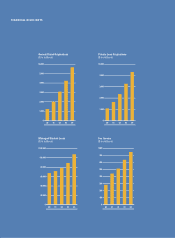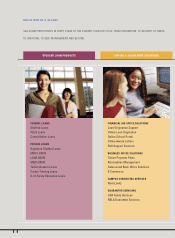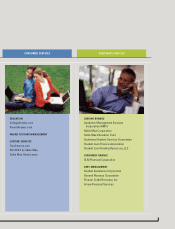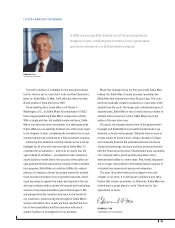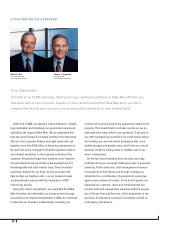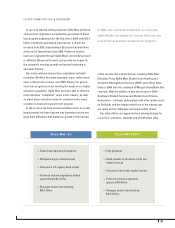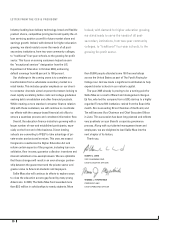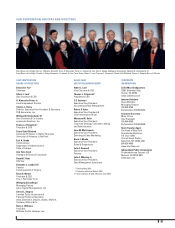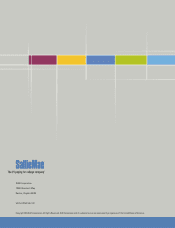Sallie Mae 2004 Annual Report Download - page 8
Download and view the complete annual report
Please find page 8 of the 2004 Sallie Mae annual report below. You can navigate through the pages in the report by either clicking on the pages listed below, or by using the keyword search tool below to find specific information within the annual report.
4
LETTER FROM THE CEO & PRESIDENT
Indeed, with demand for higher education growing,
we stand ready to serve the needs of all post-
secondary institutions, from two-year community
colleges, to “traditional” four-year schools, to the
growing for-profit sector.
Industry-leading loan delivery technology, broad and flexible
product choice, competitive pricing terms and quality life-of-
loan servicing position us well for future market share and
earnings growth. Indeed, with demand for higher education
growing, we stand ready to serve the needs of all post-
secondary institutions, from two-year community colleges,
to “traditional” four-year schools, to the growing for-profit
sector. This focus on serving customers helped us earn
the “exceptional servicer” designation from the U.S.
Department of Education in October 2004, enhancing
default coverage from 98 percent to 100 percent.
Our challenge in the coming years is to complete our
transformation from a wholesale secondary market to a
retail lender. This includes greater emphasis on our direct-
to-consumer channels aimed at parent borrowers looking to
meet rapidly escalating tuition costs and college graduates
seeking debt consolidation and other financial products.
While creating a more standard consumer finance relation-
ship with these customers, we will continue to coordinate
our efforts with the campus-based financial aid office to
ensure a seamless process and consistent information flow.
Overall, the education finance industry is growing with a
larger number of new and established participants, espe-
cially on the front end of the business. Direct lending
schools are converting to FFELP to take advantage of pri-
vate-sector products and services. This year, we expect
Congress to reauthorize the Higher Education Act and
reform certain aspects of the program, including loan con-
solidation, floor income, guarantor collection incentives and
interest subsidies to tax-exempt issuers. We are optimistic
that these changes will result in an even stronger partner-
ship between the government and the private sector and
greater value to American students and taxpayers.
Sallie Mae also will continue its efforts to explore ways
to close the education access gap faced by many young
Americans. In 2004, The Sallie Mae Fund awarded more
than $2.3 million in scholarships to needy students. More
than 30,000 people attended some 150 free workshops
across the United States as part of The Fund’s Paying for
College tour. And we made a significant contribution to help
expand charter schools in our nation’s capital.
The year 2005 already is proving to be a turning point for
Sallie Mae as a result of Board and management changes.
Ed Fox, who led the company from a GSE start-up to a highly
regarded Fortune 500 institution, retired from the Board this
month. Al is succeeding Ed as Chairman of the Board, and
Tim will become Vice Chairman and Chief Executive Officer
in June. This succession has been long-planned and reflects
very positively on your Board’s corporate governance
process. Along with our talented management team and
employees, we are delighted to lead Sallie Mae into the
next chapter of its history.
Thank you.
ALBERT L. LORD
VICE CHAIRMAN AND
CHIEF EXECUTIVE OFFICER
THOMAS J. FITZPATRICK
PRESIDENT AND
CHIEF OPERATING OFFICER


